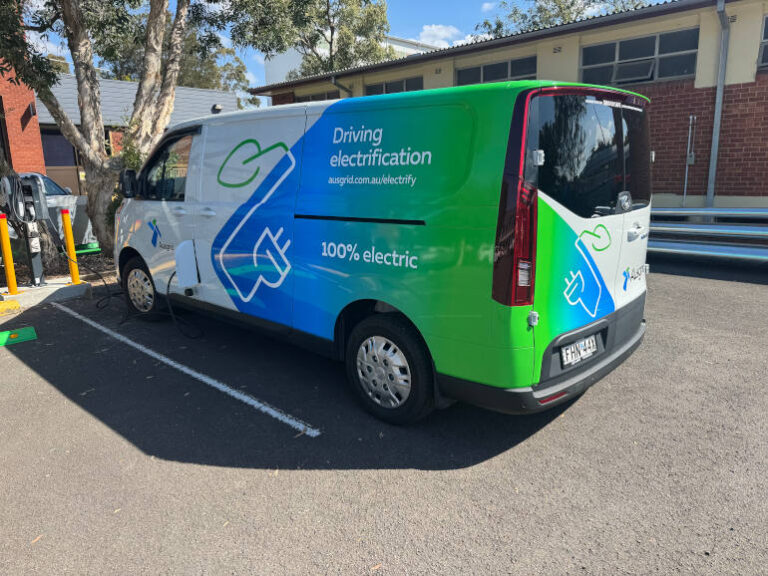As part of its ongoing effort to reduce fleet emissions, Ausgrid has added three LDV eDeliver 7 electric vans to its fleet to test the suitability of electric vehicles (EVs) for operational roles. Early impressions from Ausgrid’s Fleet Electrification Trial suggest that the eDeliver 7 is proving to be a practical, fit-for-purpose option—particularly when it comes to size, payload, and range.
According to Tim Kynoch, Fleet Engineering & Strategy Manager from Ausgrid, the trial includes one eDeliver 7 van used by the underground team, one by the substation team, and a third that’s being configured as a network testing vehicle. “We were pretty evenly split between HiAce and iLoad previously,” he explains. “The eDeliver 7 fits into that category well, and this trial is helping with our electrification journey.”
Range that supports real-world operations
One of the standout features of the LDV eDeliver 7 is its real-world range. Kynoch says the vans are “getting better than expected range,” which compares favourably with other electric vans on the market and supports full-day operations without the need for mid-shift charging.
This is a crucial factor for Ausgrid, where vehicles often cover large urban and suburban areas and must remain operational for the full duration of a shift. Unlike smaller electric vans, which Kynoch noted have “less range and smaller size,” the eDeliver 7 ticks the boxes for teams needing more flexibility.
Payload and size match diesel alternatives
From a fit-for-purpose perspective, the LDV eDeliver 7 stacks up well against the diesel vans it’s replacing. “It has proven to have a little more payload than the combustion versions,” says Kynoch, which is an important win for trade and service vehicles carrying tools, equipment, and crew.
The physical size of the van also played a key role in its selection. “Finding the right size for someone to work out the back of, as a work van, has been the tough part,” Kynoch explains. For roles where staff regularly use the rear of the van as a mobile workspace, the eDeliver 7 offers both room and utility.
Fit-out considerations and learnings
Adapting the electric van for operational use required some consideration, particularly because the battery is floor-mounted. “Drilling into the floor was our first concern,” says Kynoch. Ausgrid worked closely with its bodybuilder to make sure the fit-out was safe and practical, and now has confidence that their suppliers are familiar with EV-specific requirements.
Interestingly, Ausgrid didn’t pursue lightweight materials for the fit-out. Instead, it stuck with its robust aluminium and steel approach, ensuring the vans could endure a six-year service life with the expected wear and tear.
Driving fleet transition with flexibility
Having electric vans like the eDeliver 7 in the mix has enabled Ausgrid to better understand where EVs can be deployed in the fleet. “It’s definitely been useful to have an electric option that fits the space we need—for range, payload and physical size,” says Kynoch.
While vans and utes have traditionally filled different roles, some Ausgrid staff have discovered unexpected advantages in the switch. “There have been some staff who’ve said, actually, this is great—I’ve got an enclosed space, the barn doors provide good access, and it suits the work I do,” Kynoch notes. However, he cautions that access and terrain requirements still keep utes in the mix for certain roles.
In summary, with its solid range, suitable payload, and familiar size, the LDV eDeliver 7 is helping organisations like Ausgrid evaluate electric vehicles for real-world service roles—and make progress toward lower-emission transport.





